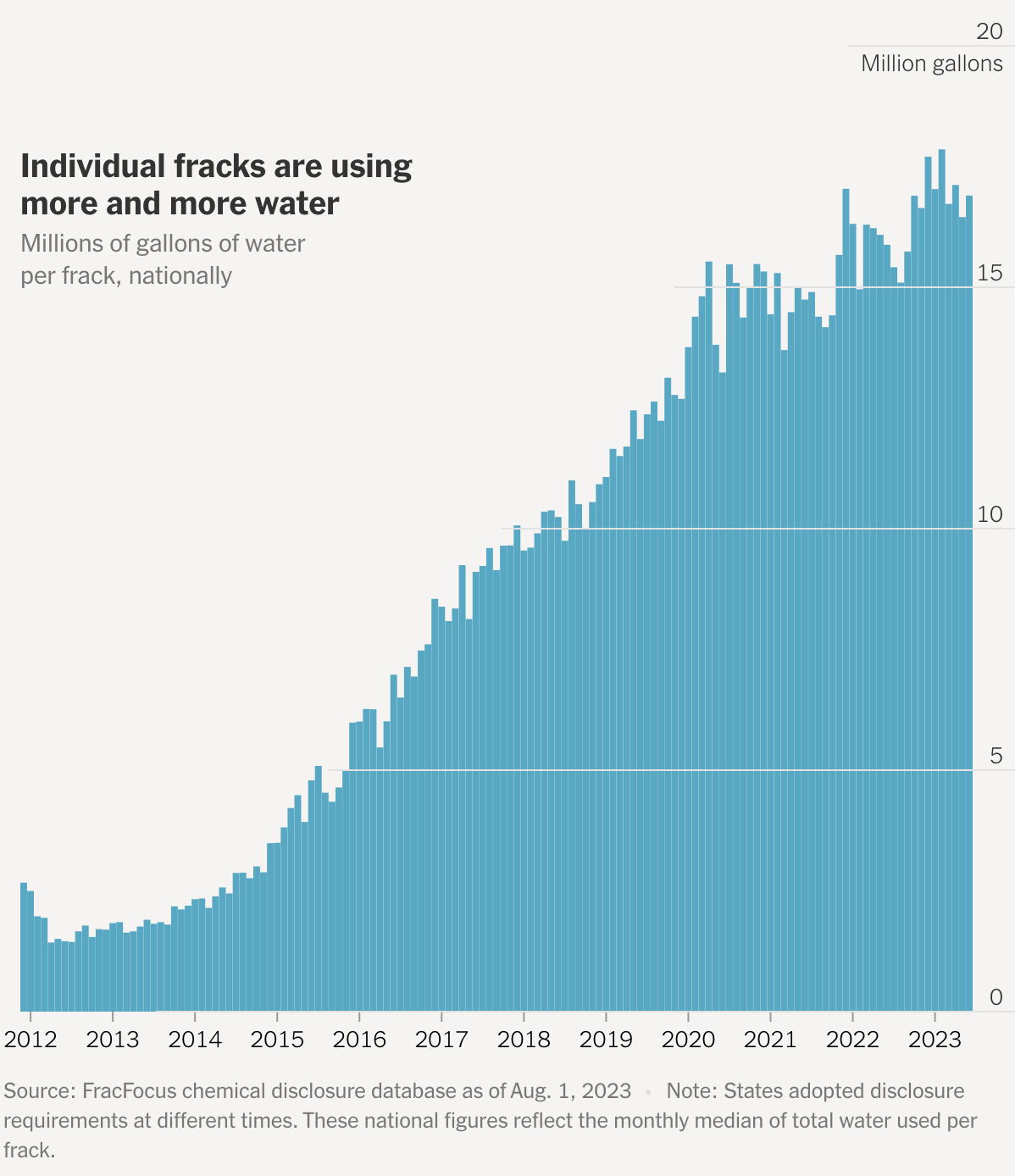- Hill Heat
- Posts
- The Monster Frack, It Was a Graveyard Frack
The Monster Frack, It Was a Graveyard Frack
My eyes beheld an eerie sight; an LNG flare lighting up the night
PRESENTED BY THE TRANSYLVANIA TWIST
The International Energy Agency has updated its 2021 pathway to (maybe) keep global warming (sorta) below 1.5°C above preindustrial levels. That pathway requires an astonishing (but technologically achievable) global build-out of renewable energy, distribution, electrification, efficiency, and conservation. As mentioned in yesterday’s Hill Heat, the Department of Energy is hosting Deploy23, a two-day conference supporting those goals, including a just transition for workers like the autoworkers on strike right now. White House advisor John Podesta celebrated the private sector’s role in this transformation in his keynote today.
Even with its quixotic targets for carbon capture for fossil fuels, the IEA projects oil demand to collapse by 23 percent by 2030 and natural gas demand by 18 percent. Understandably, the IEA concludes that coal plants must be rapidly phased out and that “there is no need for the approval of any new long lead time upstream conventional oil and gas projects.”
On his first day in office, President Joe Biden signed the United States back into the Paris Agreement, recommitting the nation to the 1.5°C target, and by implication, ending the era of new American oil and gas projects.
So how’s that going?
By any measure, the United States is wildly out of compliance with the agreement. The U.S. is responsible for one-third of planned global oil and gas expansion through 2050, equivalent to 454 new coal plants.
The United States is now the world’s largest exporter of liquefied natural gas; ten years ago it exported none. Lylla Younes and Jake Bittle have written the essential overview of southern Louisiana’s transformation into a LNG sacrifice zone. A brief taste:
“Our children are dying from asthma,” said Roishetta Sibley Ozane, an activist from Lake Charles who runs the Vessel Project of Louisiana, a local environmental organization. “People have cancer. And yet these industries are allowed to pollute and emit all of this right in our community and nothing is being done about it because it’s going under the radar.”
“Of the five liquefied natural gas terminals in operation on the Gulf Coast, at least four have suffered some kind of leak or blast, whether due to extreme weather or a mechanical malfunction.”
“In an effort to lure the company to the parish in 2016, the Louisiana Board of Commerce and Industry awarded Venture Global a 10-year property tax break to build the LNG terminal. That break was worth $83.5 million in the first year of the contract, a sum larger than the parish’s 2022 budget of $75 million.”
“As scientist Ivor van Heerden sees it, the gas industry is on a collision course with rising sea levels and ocean temperatures, building explosive infrastructure in an area that is only getting more vulnerable to climate change.”
In the New Yorker, Bill McKibben lays out the stakes of largest of at least twenty LNG projects on deck, Venture Global’s monster Calcasieu Pass 2 export terminal:
The Federal Energy Regulatory Commission seems almost certain to sign off on C.P.2 at its next commission meeting, in October; it set the stage for approval in late July, on the ground that “the potential impacts of the project would not significantly affect local resources.” (It did not consider any of the global climate implications.)
But the final word will come from the Department of Energy, which has to grant an export license before the L.N.G. from C.P.2 (and any other such project) can be sold to the European Union nations or in most of Asia; if the department declines to sign off, Venture Global will almost certainly not go ahead with the project. At the moment, the Department of Energy has to certify that such a license would be in “the public interest.”
The House G.O.P. is now trying to strip that provision from the Natural Gas Act; the Illinois Democratic congressman Sean Casten tweeted on Monday that “they are trying to put the interests of the gas industry above the national interest. We can’t let them.”
And in the New York Times, Hiroko Tabuchi and Blacki Migliozzi report on the rise of “monster fracks,” which require huge amounts of water. Fracking operations now use at least seven times the amount of water that fracking wells did ten years ago, and it’s sucking Texas dry. They report that “oil and gas operators reported using about 1.5 trillion gallons of water since 2011.” That’s a lot!
Today’s title is thanks to Walt Hickey.
Climate Action Today:
10 AM: Department of Energy
Demonstrate Deploy Decarbonize 2023
Thanks for subscribing and spreading the word. Connect with me—@[email protected] and@climatebrad.hillheat.com on BlueSky
Subscribe to Hill Heat
Climate science, policy, politics, and action




Reply